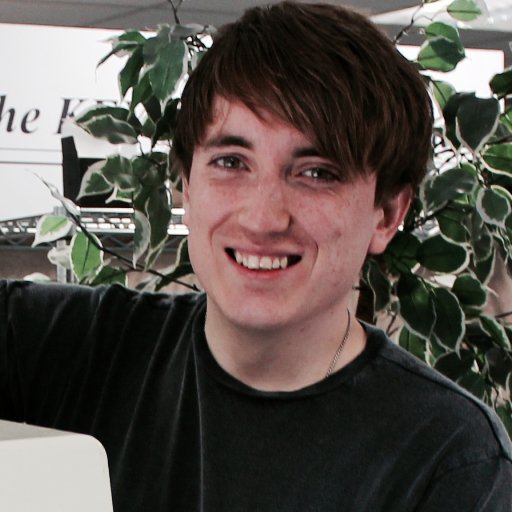BBC Micro Bit: 10 things you need to know
The tiny coding machine has landed
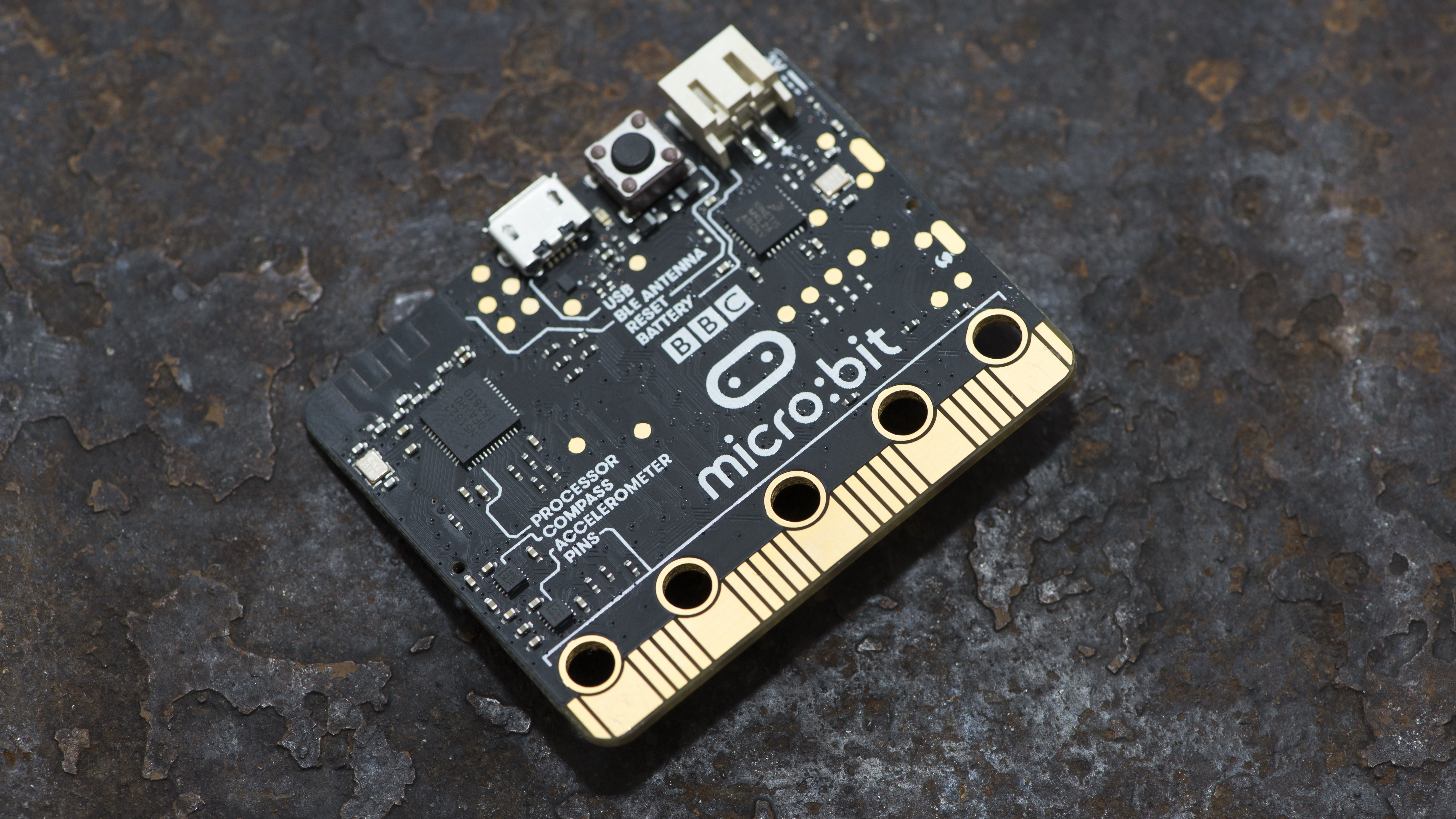
Introduction
In the 1980s, the BBC Micro computer was introduced to a generation of future programmers, with many going on to forge successful careers in the industry.
More than 30 years on, the BBC has lifted the lid on the BBC micro:bit, a new pocket-sized computer that lets anyone code, customise and use control other pieces of hardware through software.
It's being supplied to around 1 million school children in a bid to address a growing skills shortage in the UK's technology sector. After that, the Micro Bit will go on sale outside of schools through a not-for-profit organisation set up by the BBC.
So, why is it important and what can you actually do with it? Click on to find out
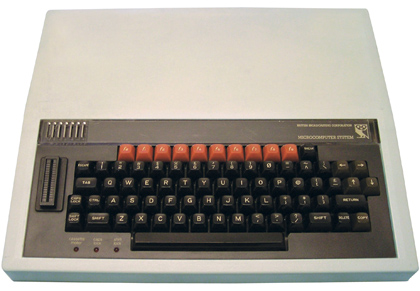
1. It's more powerful than the BBC Micro
Despite being 17 times smaller and 617 times lighter than the BBC Micro (above), the computer that introduced programming to an entire generation in the 1980s, the BBC Micro Bit is 18 times faster.
It has 25 red LEDs and two programmable buttons, in addition to a raft of sensors - including a built-in compass, on-board motion detector, Bluetooth Smart Technology and five Input and Output (I/O) rings.
Small and light, the Micro Bit has been designed as a wearable device, although its slim nature means that it requires an add-on power pack fitted with two AA batteries to be used away from a power source. Could a future version rectify that? You wouldn't want to bet against it.
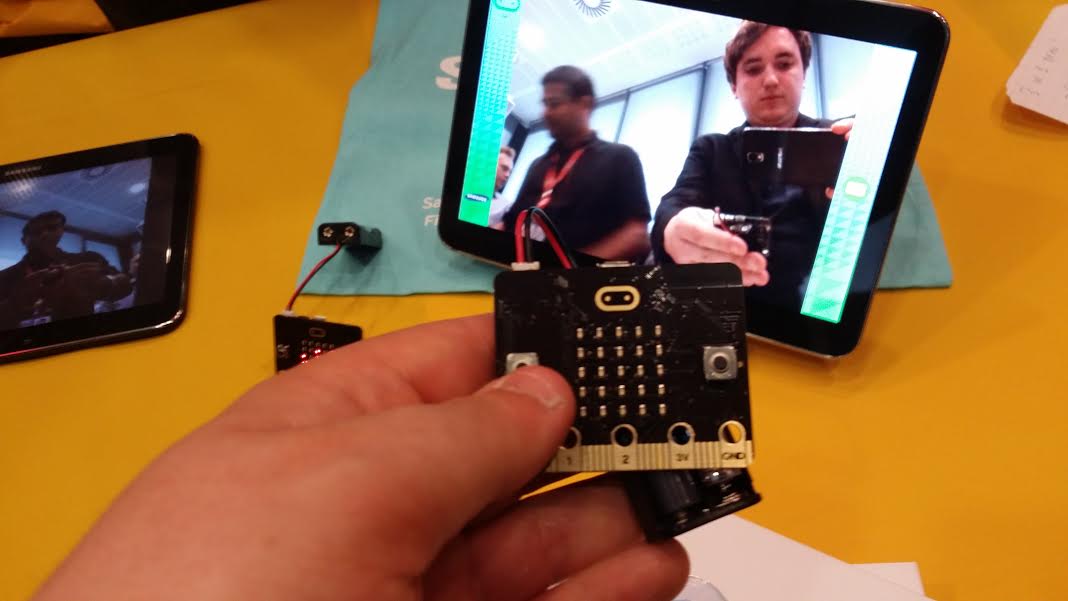
2. It's really easy to use
The Micro Bit is much more advanced than its older cousin, but programming for it has been designed to be as easy as possible.
It's compatible with advanced programming languages such as Python and C++, and Microsoft has provided two coding languages - Microsoft TouchDevelop (a text-based language) and Microsoft Blocks (a graphical coding language) - to make coding easy.
In a demo given to TechRadar, Samsung demonstrated how a "Remote selfie app" can be created in just three lines of code, starting with a check to see if a button is pressed, followed by the Micro Bit contacting the tablet using Bluetooth LE, and then taking the photograph.
Got an Android tablet running 4.4 onwards? Then you'll be able to do it too. Easy peasy.
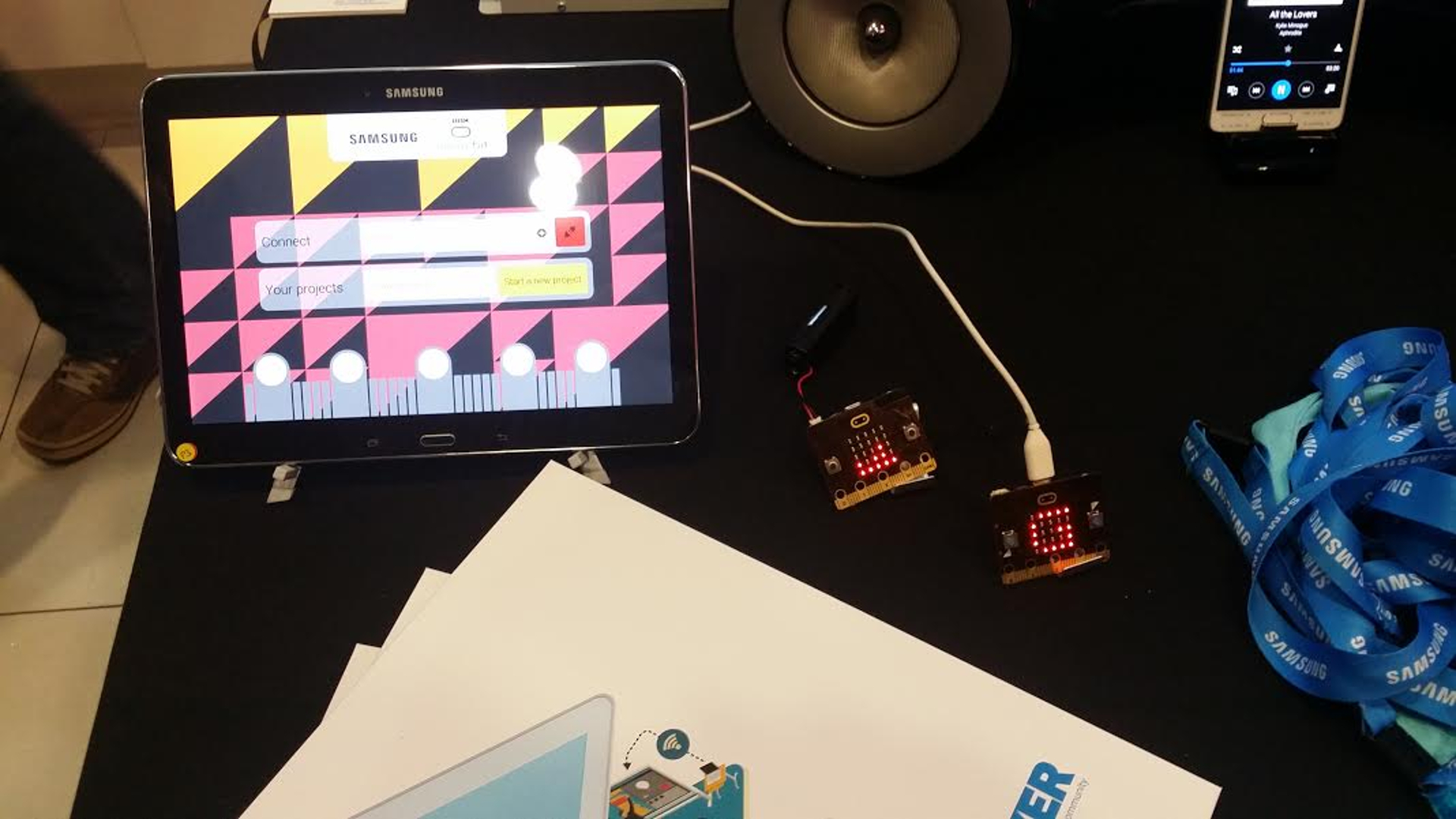
3. It'll work on tablets and laptops
Because the BBC Micro Bit has its own dedicated website hosted on Microsoft's Azure cloud service, users can access programming environments and learning materials on any internet-connected device.
The Micro Bit website hosts all code editors and stores the programmes written by users, in addition to hosting resources built for the Micro Bit (all of which can be accessed via dedicated Android and iOS apps).
By using Microsoft's TouchDevelop app, coding can be compiled in the cloud before sending the results back down to the Micro Bit, requiring minimal local storage - great for for owners of more affordable tablets.
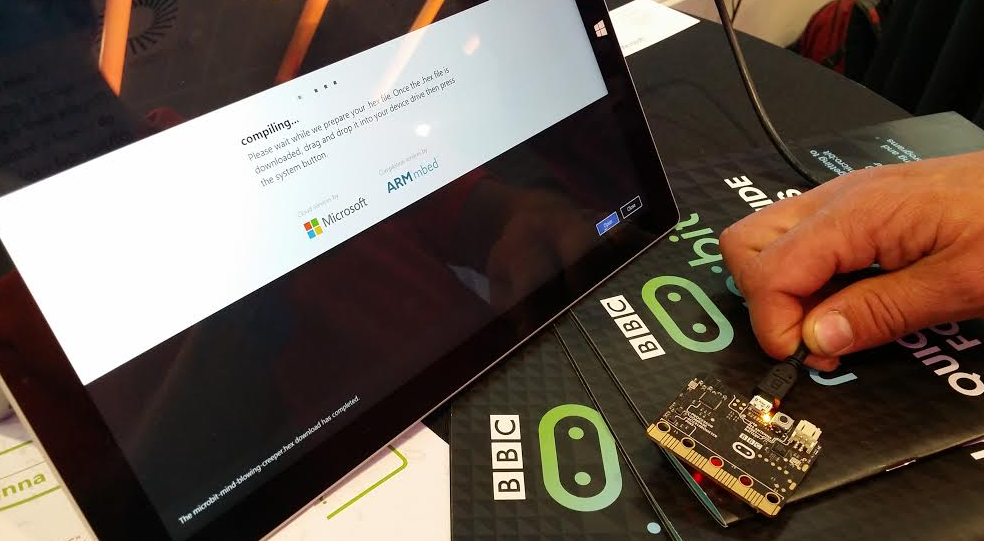
4. ...and smartphones too
Tablets and notebooks are great for coding on the go, but you might not always be carrying one around. There's a better chance that you'll have your smartphone on you, which Microsoft reckons is a good thing for two reasons:
First, most mid-range (and above) smartphones house the same sensors as a Micro Bit, meaning that, secondly, it's possible to compile scripts and simulate programs on the go using Microsoft's TouchDeveloper app without having the Micro Bit there.
Demonstrating the app to TechRadar, Microsoft Principal Research Software Development Engineer Peli De Halleux said: "Coding on the smartphone is a great experience. I'd even say it's the best way of doing it because our simulator uses the sensors in your smartphone - including its accelerometer.
"You can code on the bus, in the subway or during your downtime, coming up with a crazy idea that you can then deploy on the Micro Bit. Our foundation idea for the project was building the environment to code on phones."
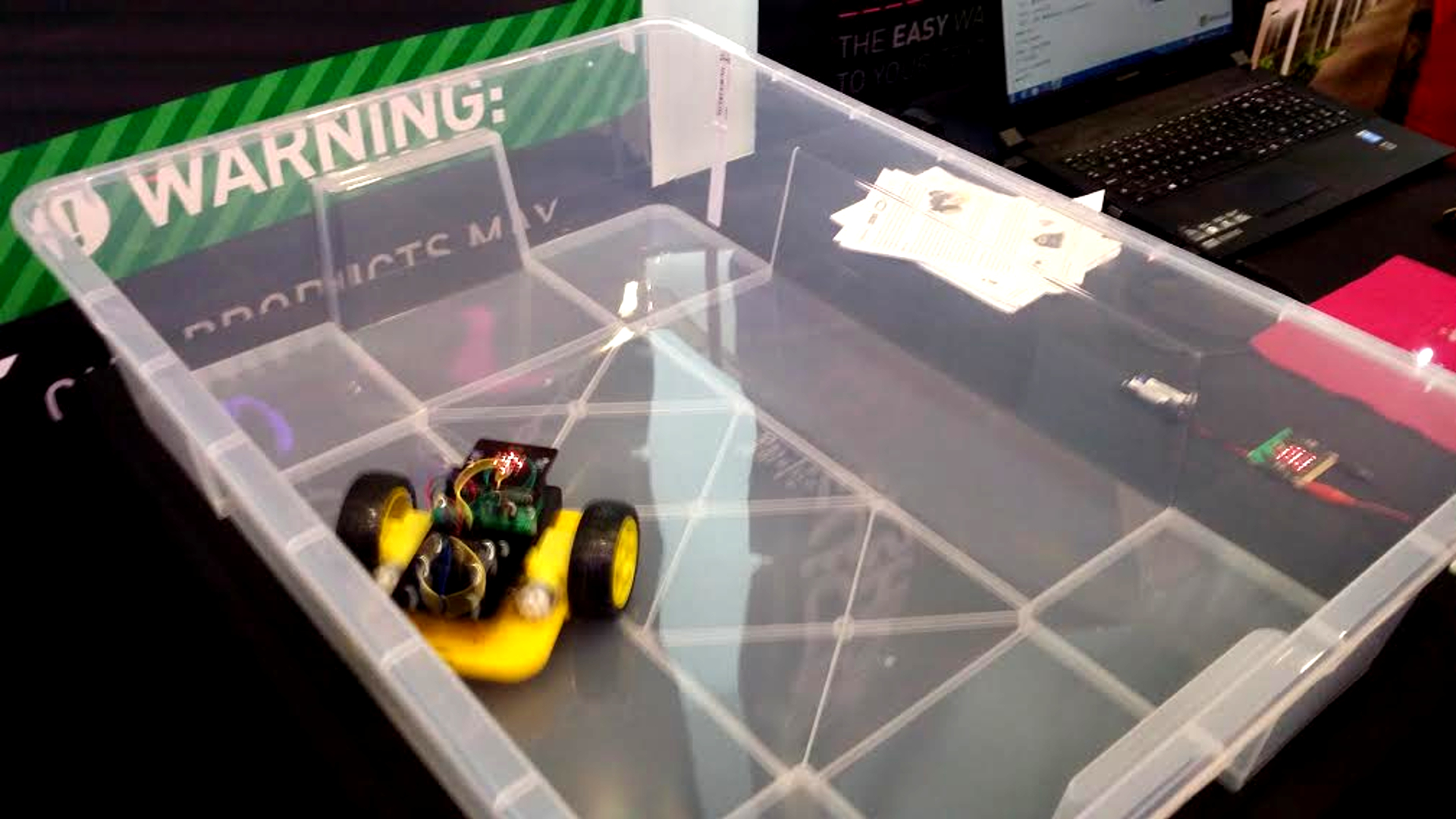
5. It's a bit like Lego
The Micro Bit can be extended and connected to other boards through its five Input and Output (I/O) Rings, allowing cradle clips, crocodile clips and banana plugs to send commands to robots and motors.
In a demo given to TechRadar, electronics supplier Kitronik showed off a Micro Bit that had been soldiered in a non-permanent fashion to a motor controller board using pins on the bottom of the device.
The program that was loaded onto the Micro Bit controlled the motor using four lines of code (two output commands for each motor), which made the vehicle's wheels move forwards or backwards.
By having the accelerometer send an output command to one or both of the wheels after bumping into the side of the box, the car automatically span around and moved in another direction.
Top Gear, eat your heart out.
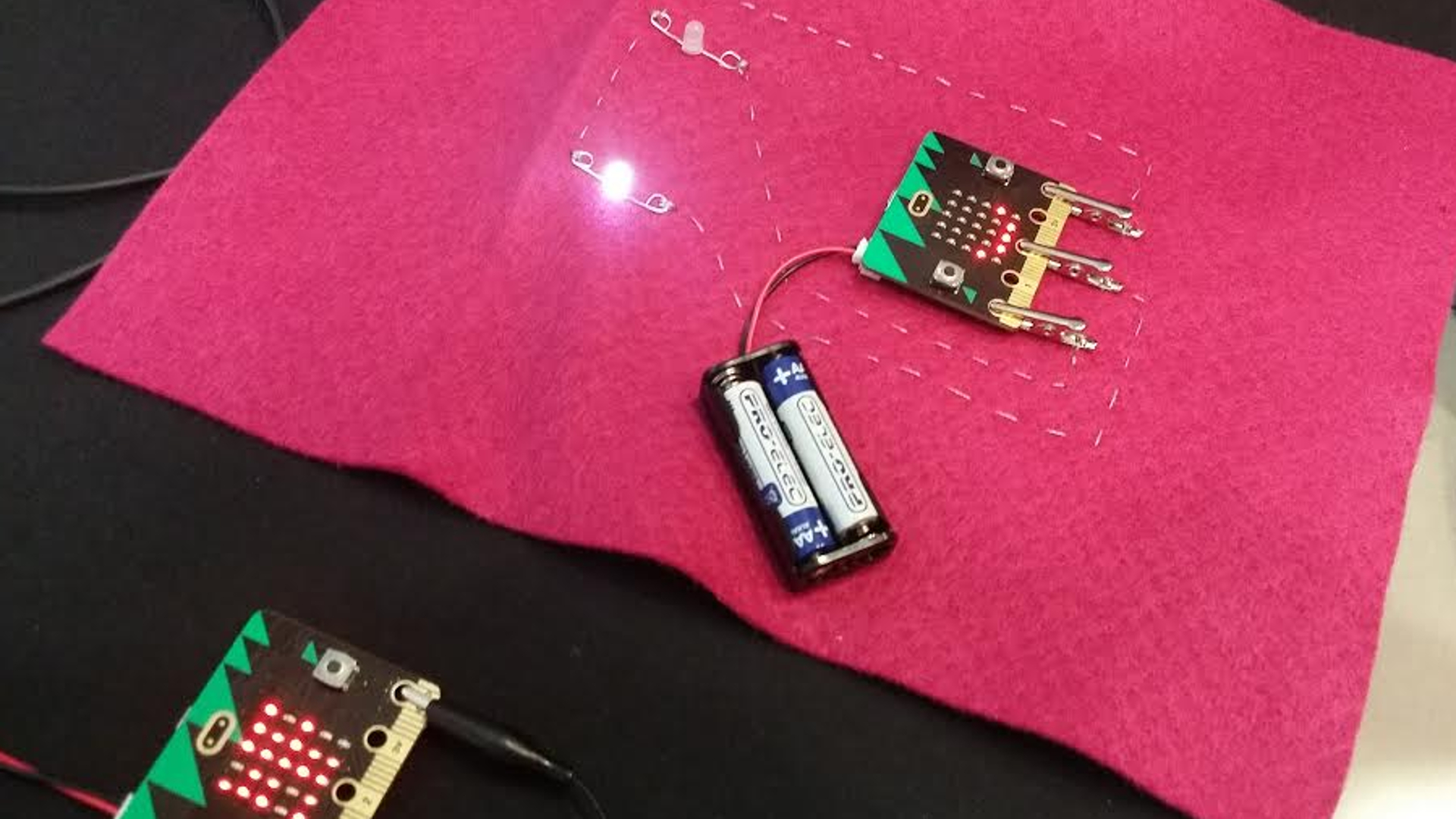
6. It's gender-neutral
The BBC is hoping that the Micro Bit will inspire girls to learn programming as well as boys. At the Micro Bit's launch, BBC Controller of Digital Jessica Cecil said that she believes there's a good chance of that happening due to all 11-to-12 year olds getting one for free.
The Micro Bit's flexibility could go a long way to helping the BBC achieve its mission. Kitronik also demonstrated to TechRadar how the BBC Micro Bit can be used in textiles, a course subject traditionally taken by more girls than boys.
Using conductive thread that's laced with nanofibres of silver, the thread acts as wire, sending signals from the Micro Bit to connected components. And because it's soft thread, rather than rough wire, it can be used in different, comfortable designs.
Pupils could code their name into lights that flash up on a jacket, for example, or lapels could be programmed to flash in time to music.
On the topic of gender neutrality, Andy Griffiths, president of Samsung Electronics UK and Ireland, told TechRadar: "It's about getting everyone involved - boys and girls in equal measure - and we'll see where that leads.
"The nice thing about the Micro Bit is the accessibility of it as a platform. It's not complicated, and we hope that as it takes off it'll give everybody a chance of success."
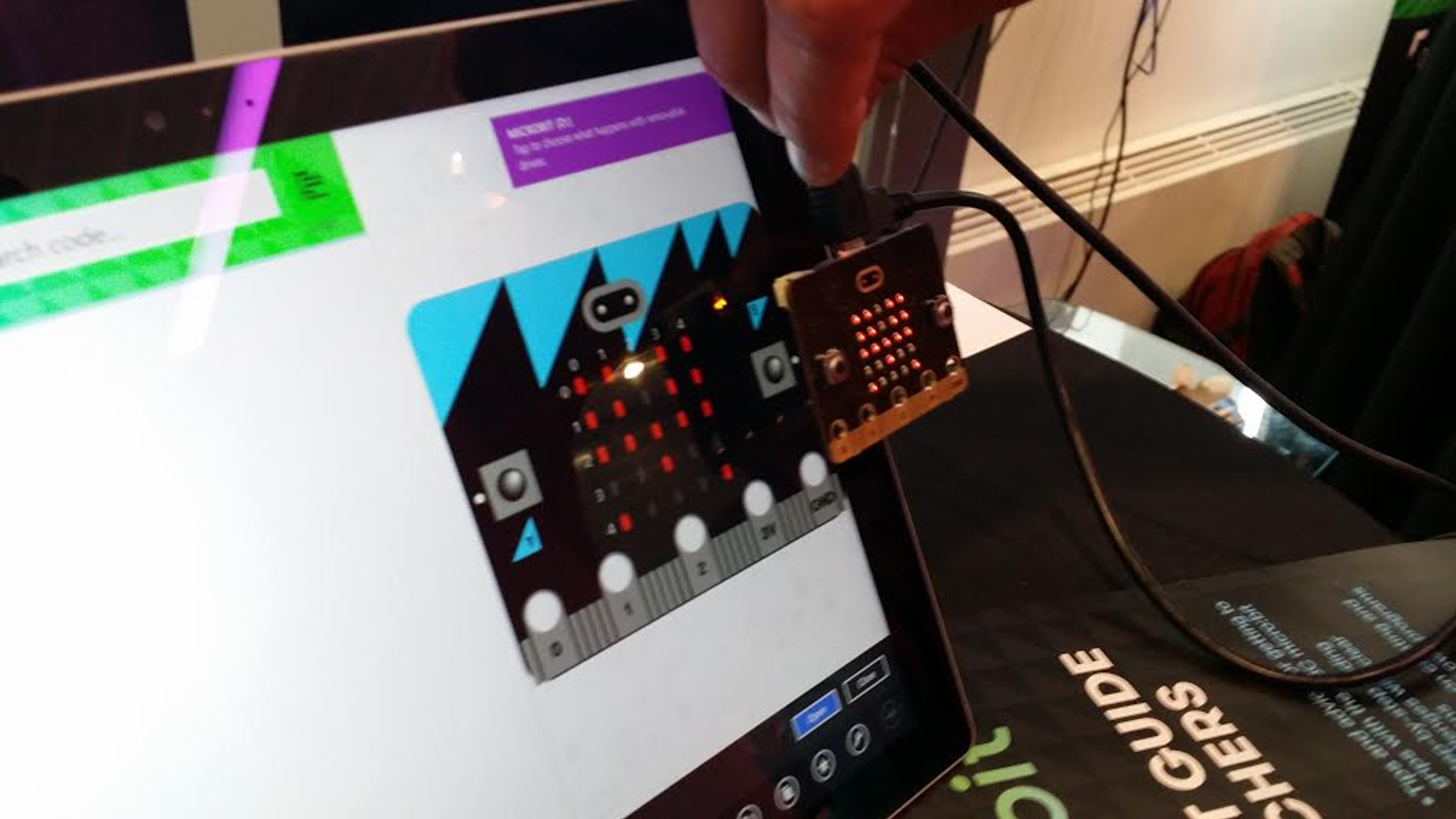
7. It'll complement the Raspberry Pi
The Raspberry Pi has been the major success story when it comes to education-focused micro computers, and the Raspberry Pi 3 only landed in recent weeks. The BBC has said that the Micro Bit is designed to complement, rather than compete with it.
Raspberry Pi founder Eben Upton told the BBC that he thought the Micro Bit was a "fun" device, adding: "There's something about hardware that really fires kids' enthusiasm."
Upton added that the Raspberry Pi Foundation is working to provide software resources for the Micro Bit.
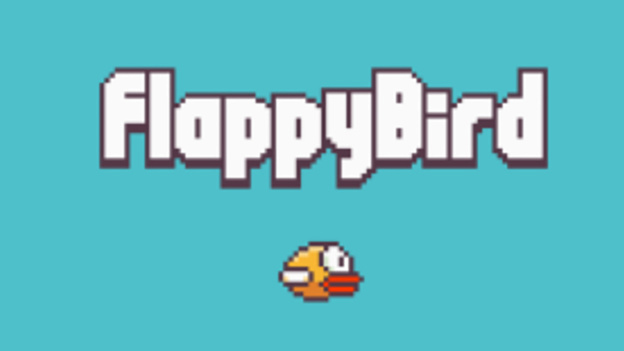
8. It's appealing to gamers
The Micro Bit's compatibility with tablets and smartphones makes it an appealing prospect for young programmers with an interest in gaming.
Even though it only has two buttons, which seems like something of a drawback at first, the Micro Bit's simplicity makes it a good fit for programming simple mobile games such as Flappy Bird, and even Endless Running Games (using the accelerometer to tilt the board from side-to-side).
Demonstrating Flappy Bird in action, Nordic Semiconductor managed to program the Micro Bit to act as a controller, using either of its buttons to make the bird fly upwards.
"We wanted to make a project that was easy to understand, allowing kids to expand on it," the company told TechRadar. "A lot of projects start as demos or something that's already running, allowing you to understand how it works and then add to it.
"You can then add more functionality, such as displaying the score on the Micro Bit's matrix LED using the libraries that are available. You could even build a Playstation-style controller for use with the Micro Bit if you wanted to expand the idea."
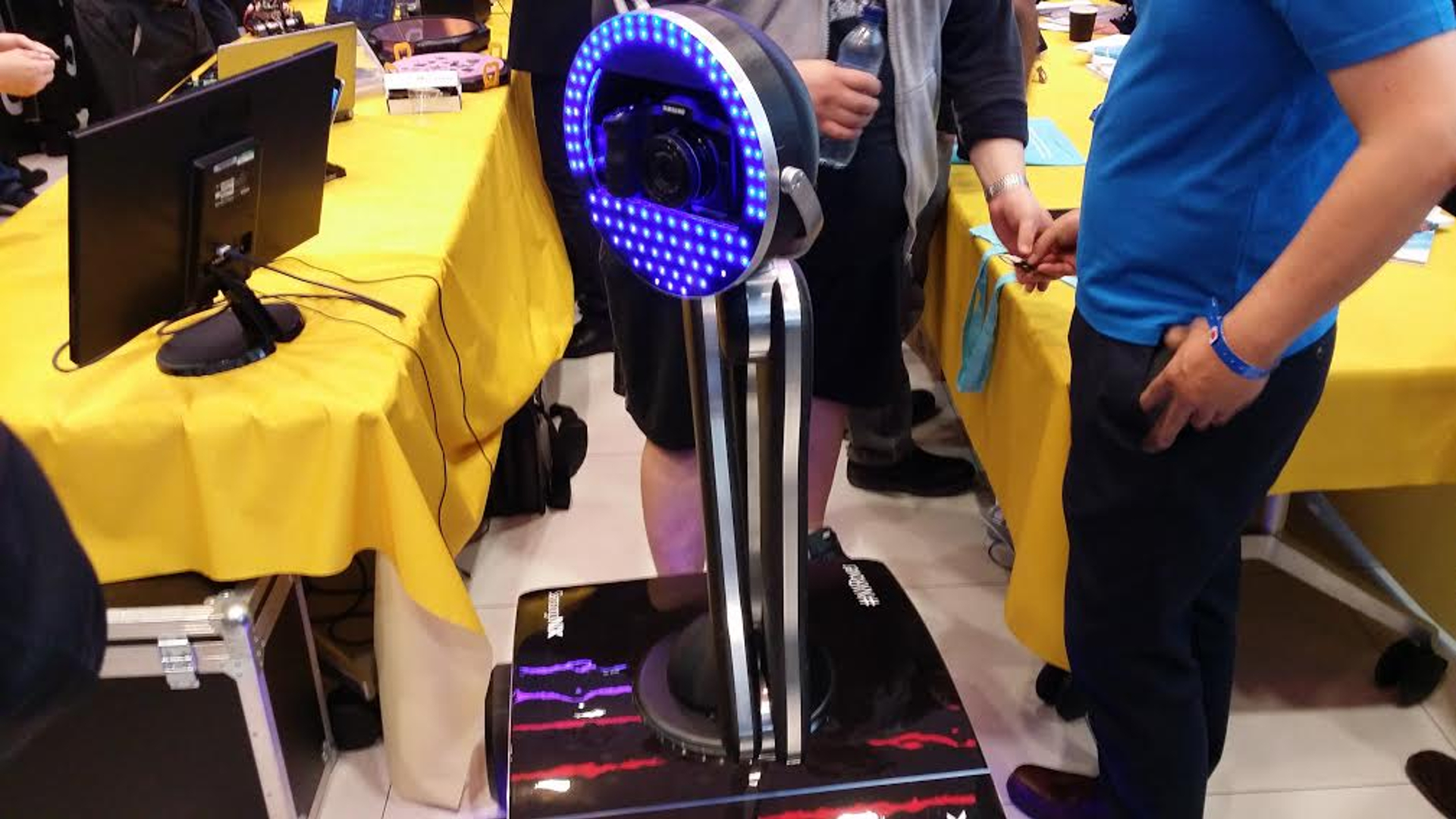
9. It's not just about the small things
While the majority of Micro Bit projects will start off small, there's nothing stopping pupils from controlling much larger objects such as the Samsung NX Rover - a six-wheeled robot with movable limbs.
To demonstrate the flexibility of the Micro Bit, Samsung took the NX Rover to Iceland. It then sent people in London a webpage where they could log on and take it in turns to move the NX Rover's head while panning and tilting its camera and beam pictures back to the UK over the internet.
Participants' commands were sent to a Micro Bit housed inside the robot that was connected to an Arduino board (also inside the robot) using Bluetooth LE. The Arduino board then communicated with different motors which controlled the robot's central spine and rotating head.
According to Samsung, the Arduino was needed because Micro Bit drivers don't yet exist for the Rover's Dynamixel motors - though the company reckons it's only a matter of time before somebody writes them.
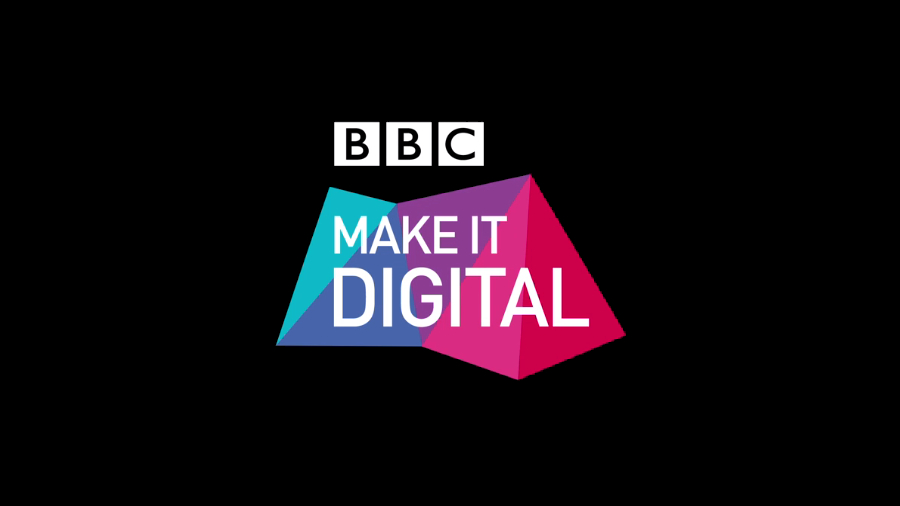
10. The BBC's partners have made it possible
While the BBC has taken the lead on the Micro Bit project, it's backed by numerous industry partners - which could be key to its success.
Those partners will be working closely with teachers, educators and schools to make sure that resources, information and support is available in advance of distribution this autumn in time for the Micro Bit's arrival in schools in October.
The BBC's partners include:
- ARM - providing mbed hardware, software development kits and compiler services
- Barclays - supporting overall product delivery and outreach activities
- element14 - sourcing components and managing the manufacturing
- Freescale - supplying the sensors and USB controllers
- Lancaster University - created and wrote the Micro Bit runtime
- Microsoft - providing the TouchDevelop web-based programming tools and hosting service as well as teacher training materials
- Nordic Semiconductor - supplying the main processor and enabled Bluetooth Smart
- Samsung - connecting the BBC Micro Bit to phones and tablets, and developing the Android app
- ScienceScope - distributing to schools and developing the iOS app
- Technology Will Save Us - designed the shape, look and feel of the device
- The Wellcome Trust - Providing learning opportunities for teachers and schools
